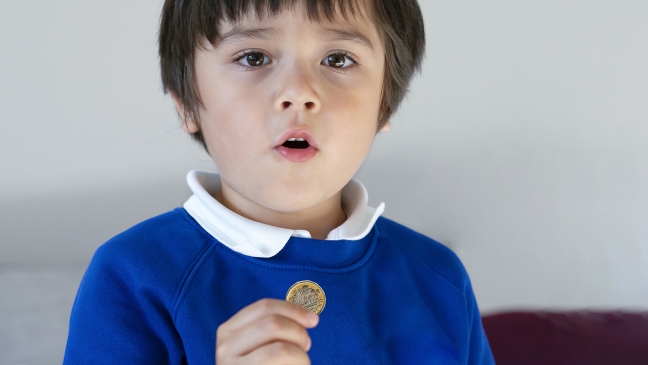I helped design pupil-premium funding, but it needs an urgent update

The pupil premium was a key policy for the coalition government.
Eleven years on from the first allocation is enough distance to take a look at whether the policy has worked as planned and how it could be adapted in the future.
It’s a policy close to my heart. I wrote a lengthy proposal in 2008 which, ultimately, led it to be adopted by the Conservative Party. The Liberal Democrats had been arguing for it for a number of years before that.
The idea itself had first been introduced to the UK by Professor Sir Julian Le Grand, of the London School of Economics, as part of a policy commission for the Labour Party in the 1980s.
A simple, compelling idea
Unlike many other policies I worked on at the time, it had the advantage of being conceptually simple. Children from low-income backgrounds should have additional funding and it should be absolutely clear to everyone in the system which pupils received extra cash.
The first reason was obvious - it’s more expensive to educate children from lower-income families because they have, on average, more need for academic catch-up support and pastoral care.
But the funding system already reflected this, albeit via a complicated and outdated “deprivation formula”. What it didn’t do was attach the funding to specific pupils.
I, and others, felt this was important to disincentivise “cream-skimming” - whereby some schools sought to avoid admitting poorer pupils - and also to create a mechanism for holding schools accountable for closing the gap between rich and poor.
Who gets the money and why?
The big debate we had at the time was what to use as a basis for the payment. The obvious choice was to look at those pupils on free school meals, as we already had the data. But in my paper, I’d worried that this wouldn’t fully reflect the groups we wanted to help. Low attainment was not, I pointed out, purely a matter of income but also of culture.
Some groups tend to be just above the free school meals threshold but underperform compared with others that are below it (I used the example of Tower Hamlets, where pupils, on average, come from lower-income families than Barking and Dagenham but achieve better exam grades).
The other problem with free school meals was that the figures are quite volatile; pupils move in and out of entitlement as their parents gain or lose jobs, or other circumstances change - which would have been a nightmare for budgetary management, especially for small schools.
Ultimately, we ended up with a compromise model called Ever 6. Any pupil who had been on free school meals in the past six years would get the pupil premium. And it was also assigned automatically to looked-after children (as well as children of those in the military, for no other reason than The Sun newspaper liked the idea).
Gove offered to kiss Clegg
The politics of it were easier than the design. In 2010, it was an idea that symbolised the “Rose Garden” era of coalition politics, when the Lib Dems and Tories were in the honeymoon phase of their relationship.
It was something both parties had put in their manifestos, emphasising Nick Clegg’s commitment to education and David Cameron’s (short-lived) “compassionate Conservatism”. There was no difficulty in getting agreement to include the idea in the government’s education White Paper.
Despite this, the Treasury still tried to neuter it completely during the spending review that summer, by cutting other elements of the schools’ budget to pay for it.
Thanks mainly to Clegg using up some of his political capital, we largely fended the chancellor off - leading to a memorable phone exchange during which Michael Gove was so grateful that he offered to kiss the deputy prime minister.
But we didn’t get everything we wanted. The wider schools’ budget was only protected in “cash terms”, meaning that inflation would chip away at it (albeit inflation was mercifully low back then). So, even from the start, there was a sense that the premium was just plugging gaps in budgets.
Did it work?
As with nearly all national policy, it was rolled out in a fashion that means there’s no way to tell for certain whether it worked. There was no pilot or control study. We know there was a small closing of the gap up to 2018, though we can’t assert a causal relationship.
There is a study from Professor Stephen Gorard, of Durham University, that shows less clustering of disadvantaged pupils after the premium was introduced, and improved attainment at primary. This is the best evidence we have but it certainly isn’t conclusive.
Some things we can be more sure of. It certainly hasn’t led to schools actively trying to attract pupil premium students, as I’d hoped. We allowed schools to give children on free school meals preference in admissions but almost none have chosen to do this. I suspect if the amount had been a lot higher, we would have seen a different response.
On the plus side, it has led to a lot more conversations about how to use resources to counter disadvantage. Schools have to be able to explain to Ofsted what they’re doing with the money - and this need for a pupil premium strategy has focused attention on the issue.
In recent years, though, while schools have still been quizzed by Ofsted on their pupil premium spend, there has been less attention on “closing the gap” from central government.
Once the Lib Dems, and David Cameron, were out of power, the mood switched. Theresa May’s advisers believed that too much focus on the worst off alienated ordinary people, who are hardly wealthy. And no secretary of state since has made it even a rhetorical priority.
The premium itself has become increasingly less valuable owing to inflation, which is now much higher than it was in the coalition years.
And underlying changes in the overall funding formula have significantly reduced other money for disadvantage, so schools with the lowest-income intakes are now worse off than they were in 2010, relative to others.
A gap that won’t close
This has unquestionably undermined the policy. Again, we can’t draw a direct causal link here but the gap between pupil-premium-eligible students and others has stopped closing.
Even if one is sceptical of a causal relationship between the premium and attainment gaps, it’s very hard to deny that schools with lots of low-income pupils need more money right now.
They’ve lost out from funding formula changes at the same time that child poverty is rapidly increasing, owing to welfare benefits caps and freezes, as well as rising living costs, particularly for heating and food.
There has also been a substantial reduction in other services able to support low-income families, owing to massive local government cuts. Mental health services are also under unprecedented pressure and pupils in poverty are substantially more likely to need mental health support.
So, at the very least, the premium should be restored to 2011 levels, taking inflation into account. Ideally it would be increased.
Why pupil premium needs refreshing for the new era
One way of doing this without having to break the bank would be to focus any increase on what the Education Policy Institute terms the “persistently disadvantaged” - those who have been on free school meals for more than 80 per cent of their time in school.
This group is just as far behind the average as it was in 2010, and clearly requires more support. Doubling the premium for this group only would cost in the region of £1 billion a year.
It would also be sensible to increase the early years pupil premium to the same as primary, given how important school readiness is in enabling primary schools to close the gap.
At the moment, it is less than a quarter of the value, for no apparent reason. As such, many institutions don’t even bother with the bureaucratic hassle of getting the money. Equalising the early years’ premium with the schools’ one would cost another £100 million.
But boosting the value of the premium will only take us so far. The government also needs to start talking about the problem again. The recent White Paper had some useful elements but lacked any kind of narrative.
There was no sense of a unifying mission for the sector. The department has become overly reliant on formal accountability measures to drive school improvement, and has forgotten the power of persuasion and moral purpose.
Most teachers and leaders went into the profession to make a difference and the pupil premium can help them to do so, but it has to be put back at the centre of the story.
Sam Freedman is a former senior policy adviser at the Department for Education and a senior fellow at the Institute of Government
You need a Tes subscription to read this article
Subscribe now to read this article and get other subscriber-only content:
- Unlimited access to all Tes magazine content
- Exclusive subscriber-only stories
- Award-winning email newsletters
Already a subscriber? Log in
You need a subscription to read this article
Subscribe now to read this article and get other subscriber-only content, including:
- Unlimited access to all Tes magazine content
- Exclusive subscriber-only stories
- Award-winning email newsletters
topics in this article




